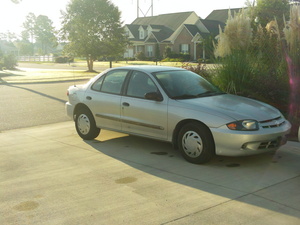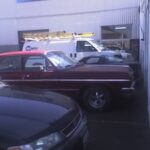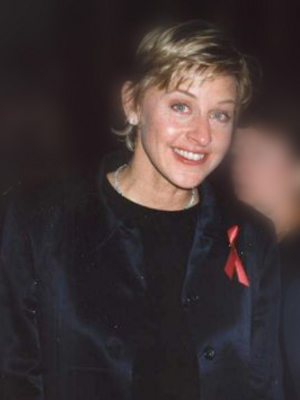In the Fall of 2003, our budget was tight and we needed a car. My wife and I settled on a nearly new 2003 Chevrolet Cavalier from CarMax for about $10,000. At the time, it looked like the most substantial available car within our budget. Since it only have 14,000 miles on the odometer, we thought we would get at least few years of trouble-free service. We rejoiced in having a car payment of considerably less than $200 per month.
The exterior style of the 2003 Chevy Cavalier was a winner. This newly restyled Cavalier had a sharp nose and aerodynamic profile with a few nifty art deco touches around the tail lights. The profile was both sporty and respectable. Our little Chevy Cavalier looked professional and upwardly mobile with a silver paint job and a subtle pinstripe along the side. While the exterior was a winner, the interior was a little less successful. The dark gray cloth interior was simple and straightforward. However, the cup holders were positioned directly beneath the air conditioning and defroster controls. Consequently, soft drink cups would often block needed accessories. While car magazines often whine about cheap plastic in Chevrolet products, we thought the rest of the interior features were quite satisfactory. The AM/FM CD player radio generally delivered good sound quality. We had no frills in our Cavalier. Our windows wound up and down with hand cranks.
The engine and overall performance of our Chevrolet Cavalier were also pretty good. The 2.2-liter engine delivered 150 horsepower and peppy acceleration. The drive train and throttle response were excellent. For a car with normal street tires and an automatic transmission, we found handling to be satisfactory within the limits of sane driving. The 2003 Chevrolet Cavalier was also an excellent highway cruiser. I found that the little car pulled strongly and handled well at highway speeds up to 95 miles per hour. At speeds above 90, the lack of a rear spoiler made the car seem a little “floaty” and it was prudent to slow down. With many states enacting “super-speeder” legislation and strong reckless driving penalties, we generally limited our speeds to within 5 to 10 miles per hour of the speed limit. We found that the Cavalier handled well on dry pavement, but without anti-lock brakes, we found that handling in the rain was dicey. Real world mileage was about 20 miles per gallon in a congested city to nearly 30 miles per gallon on the highway.
The strengths of the 2003 Chevrolet Cavalier could make it sound like a competitor for BMW. But, the weaknesses of the 2003 Chevy Cavalier were frustrating and annoying. Once we were safely away from the billiard ball smooth course of our test drive, we found that our Chevy Cavalier creaked and rattled like a tall ship. The hubcaps were made to resemble alloy wheels and had plastic “nut covers” that looked much like lug nuts. However, when a mechanic applied an air wrench, they shattered like the plastic they were. We really thought that the mechanic at a Chevy dealer should know better. We continually scraped the front air dam of our low slung Cavalier curbs when parking. The front air dam took damage from curbs and road debris on numerous occasions. Interior noise levels were higher than they should have been.
From 2003 through 2006, our Chevy Cavalier was generally reliable and trouble free. However, by 2007, the bad roads and parking garage speed bumps in downtown Atlanta took their toll. Rattling and thunking got progressively worse. In 2006, we had the front suspension worked on (the McPherson Struts were replaced), but our 2003 Chevrolet Cavalier was only quieted for a few months. As heavy set people, we were continually embarrassed by a car that would groan loudly each time we got in or out. Over time, our Chevy Cavalier deteriorated into a thunking, rattling, groaning, squeaking, embarrassment. Even the paint started looking bad with black streaks appearing near door handles and the fuel filler door.
A minor fender-bender hastened the decline of our Chevy. In 2007, our Chevrolet Cavalier survived being rear-ended while stopped at a traffic light in downtown Atlanta. As a result, the rear bumper cover, bumper substructure, and rear fender were replaced. The rear seat broke due to the impact and would not hold to the proper incline. Overall, I was not impressed by the construction or safety offered by the Chevrolet Cavalier. While our Chevy was repaired by insurance, within a few months the seat would often unexpectedly click back a notch or two when my wife was driving.
In 2009, the once reliable Chevrolet Cavalier broke down on us twice. Once, it required a jump start in a shopping center parking lot and the subsequent replacement of the battery. The Auto Parts store ran a diagnostic and told us that we would eventually need to replace our starter as well. In a more hazardous situation, our Cavalier’s fuel pump failed on a hot summer day and left my wife stranded on the side of a rural North Carolina highway where she had to be rescued by family. We no longer trusted our Cavalier and could not wait to replace it. The rattling, groaning, creaking, and aggravating seat were all getting on our nerves. Finally, in 2010, the oil pan was ruptured by road debris, all of the oil leaked out and the car was again out of commission. When we considered the cost of all the needed repairs, the trouble other friends experienced in keeping old Chevrolet Cavaliers on the road, and the cost of anticipated repairs to correct other annoying problems, we decided to donate the car to charity. Our 2003 Chevrolet Cavalier is now dead and donated. Perhaps, it will be revived to run again?
In retrospect, our 2003 Chevrolet Cavalier reliably took us on lots of road trips from Georgia to Virginia, North Carolina, and Florida. We had a love/hate relationship with our Cavalier. The car was run hard at high speed and on rough roads. It was peppy and fun to drive. Over the years, tires and minor repairs were relatively cheap. We found that a sub-$200 car payment fit very easily into our budget and the overall price of $10,000 allowed us to pay off our Chevy Cavalier early. Overall, if you want a few years of reliable service and a low car payment, a Chevy Cavalier or its replacement the Chevy Cobalt is probably a decent option. However, the deterioration of the car in later years made us yearn for a non-GM product. If GM wants to succeed, it would do well to build higher quality entry-level sedan that would entice buyers to remain loyal to GM brands and trade up.








